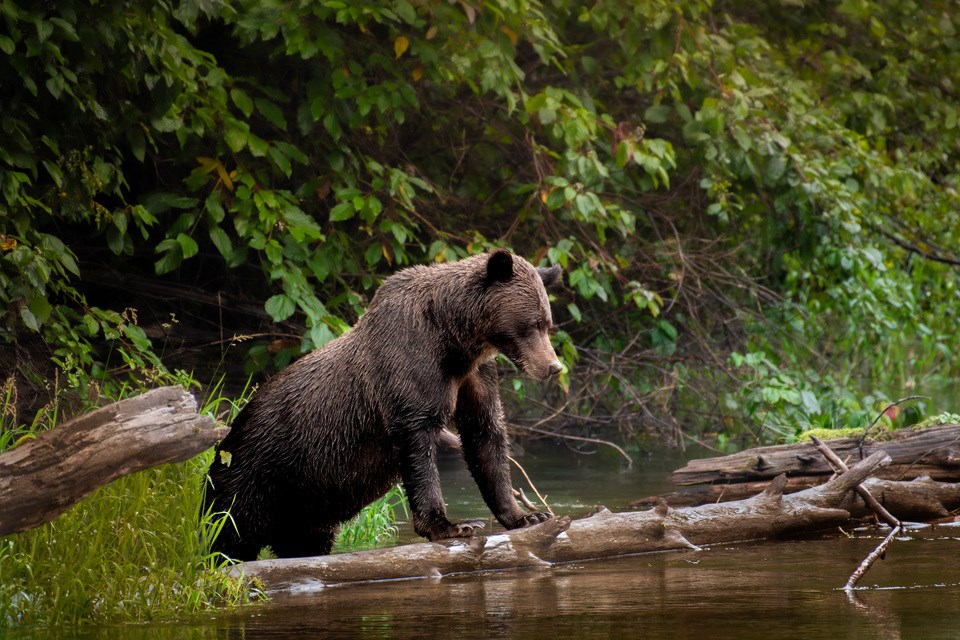How do you track grizzly bears in the dense forests of British Columbia’s Coast Mountains? Move slowly. Be vigilant. Listen.
“Usually, it’s the smell,” added Kate Field. “Wet fur. Salmon carcasses on the bank.”
A PhD candidate at the University of Victoria’s Applied Conservation Science Laboratory, between 2019 and 2021, Field lived out of camper van surrounded by electric fencing high up in the Bella Coola Valley.
Here lush forests and rivers dense with spawning salmon offer rich fishing grounds for grizzlies — so rich, it has become popular among eco-tourism operators.
But move 40 kilometres downstream and you start running into a number of settlements. The situation has led to a collision between humans and grizzlies in a conflict that outranks any other region in the province, according to one study.
“The biggest hot spot by far is the Bella Coola Valley,” said Chris Darimont, a UVic researcher who oversaw the 2016 research. “It kind of glows red.”
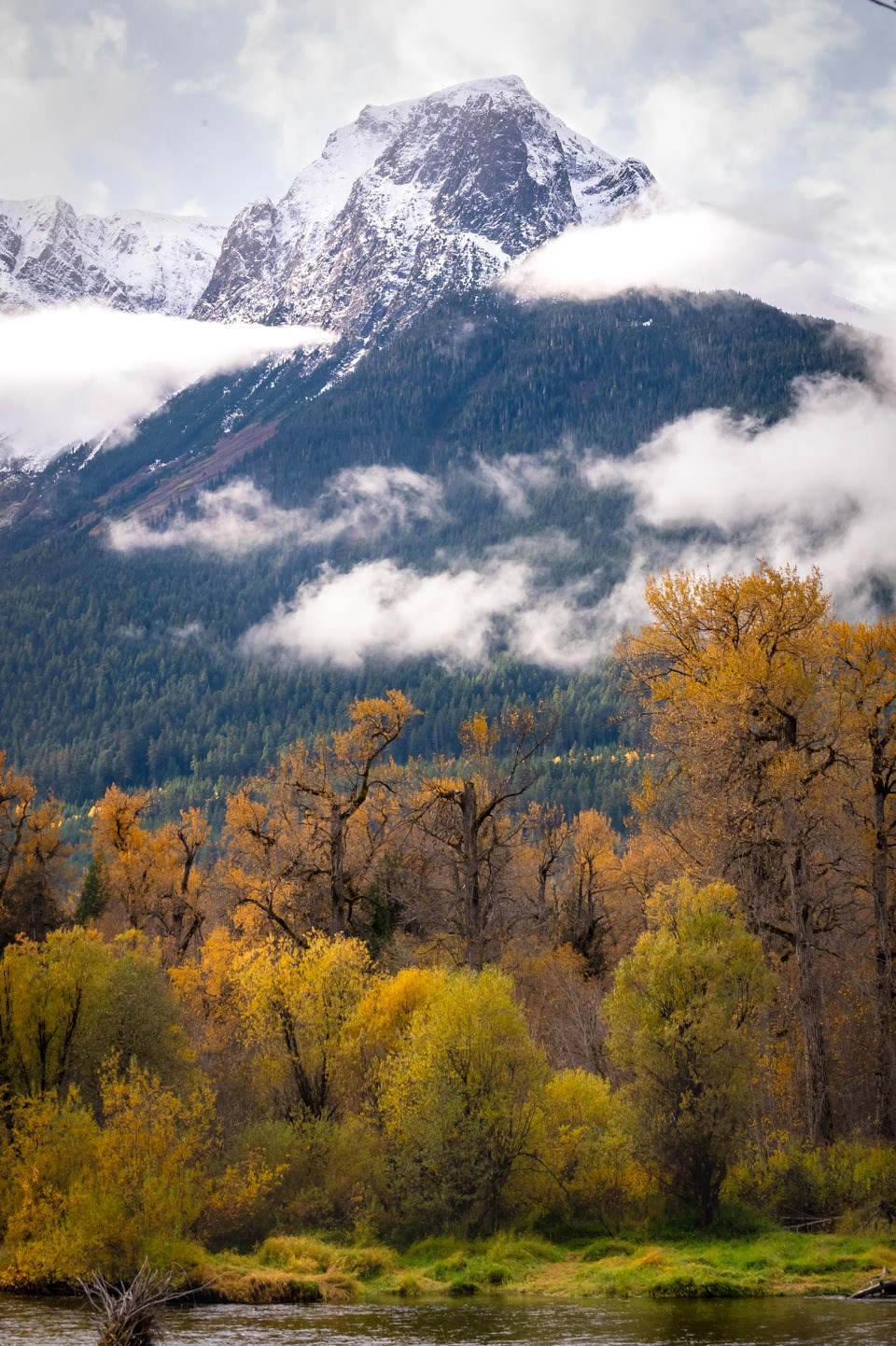
'Some people don't make space for bears'
Field first arrived in the valley with the intention of completing a multi-year study investigating how eco-tourism was affecting the bears. But the more she heard from local residents, the more she realized some people believed eco-tourism had conditioned bears to become more tolerant of people.
Residents wanted to know if eco-tourism was pushing bears into conflict with humans downstream of the viewing areas, said Darimont, who supervised Field’s work as UVic’s Raincoast research chair in Applied Conservation Science.
“It’s a great place to live if you're a grizzly bear, but it's packed with people on the valley bottom and some people don't make space for bears,” he said.
Field answered those concerns by teaming up with experts from Nuxult First Nation, Raincoast Conservation Foundation and other researchers at UVic to figure out which bears were clashing with people.
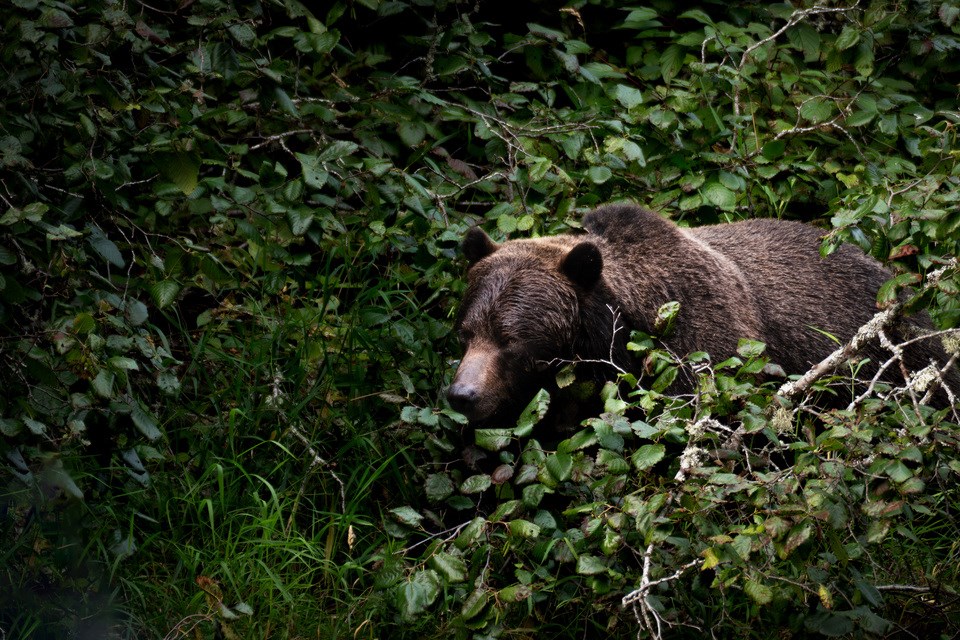
For months on end, she lived in the bush working with her Nuxult collaborators to set up trail cams and barbed-wire snags on trails frequented by grizzlies near the Atnarko River — a popular bear-viewing area.
When a bear lumbered down one of the trails, the barbed wire would snag a tuft of fur — something that happened often enough to collect more than 1,800 DNA samples. Field said she and her colleagues ultimately identified 34 grizzlies in an area with the highest eco-tour activity.
The scientist, who is also affiliated with Raincoast, said the 36 kilometres of riverbank ended up becoming a kind of DNA library cataloguing the travelling and fishing habits of local bears.
“Each strand of fur,” she said, “is like a bread crumb on a bear trail.”
Eco-tourism bears saw lower than average conflict with humans
Back in the laboratory, the scientists compared the hair samples collected in the wild with dozens of DNA specimens taken by B.C. Conservation officers from grizzly bears involved in nearby conflicts with humans.
Of the 30 bears involved in conflict down in the valley, only one was found to match a bear that frequented the eco-tourism hot spots — a number so small the researchers described it in a paper published Tuesday in the Canadian Journal of Zoology as “less likely than predicted by chance.”
“It's far lower than the average bear in the entire population,” Darimont said.
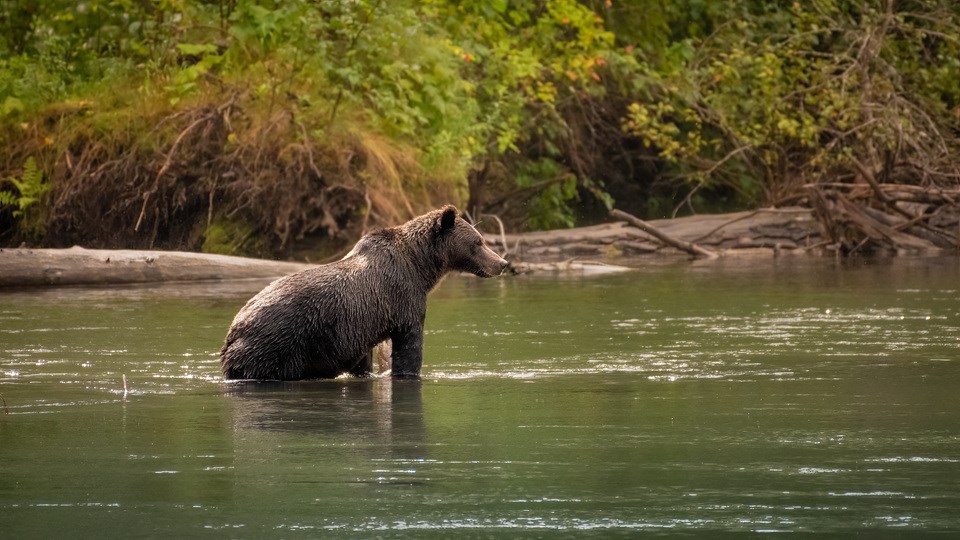
Field said people should be careful not to directly apply the results of her research to other parts of B.C. that have a different set of variables on the ground.
Still, there is a lot that local eco-tourism operators could learn from Field’s research. The scientist said she and her colleagues found evidence of the “human-shield hypothesis” playing out — where females and their young seek out the presence of humans as protection from male bears.
Field also found that eco-tourism outfits saw fewer bears when salmon was plentiful enough that they could spread out to territory that was normally less rich in fish. When salmon abundance was low, however, eco-tourism outfits tended to see more bears concentrating in viewing areas, areas that tended to be some of the best fishing grounds.
Those results, said Field, suggest eco-tourism outfits might consider limiting bear viewing trips when salmon abundance is low.
Guide association hails eco-tourism's 'neutral impact'
Kathy MacRae, executive director of B.C.’s Commercial Bear Viewing Association, said the study confirms that eco-tourism operations in the Bella Coola Valley are having a neutral impact on human-wildlife conflict. But she said people should be careful when applying those results to all eco-tourism operations.
“Eco-tourism can be thought of in two different ways. Guided ecotourism follows a set of best practices and certification. We strive to have a bear-neutral impact. We want to have the least impact as possible,” said the Sooke resident.
“Then there’s recreational tourism — people standing on the side of the road, getting too close.”
Made up of 27 operators and about 300 certified guides, MacRae’s association sets out guidelines for members on how to work with First Nation partners to view bears with the littlest impact possible. But those guidelines are voluntary and there are no comprehensive laws dictating how operators should behave.
“For the most part, they’re operating because they love the bears,” she said. “I haven’t heard of anyone operating in a bad way but I’m sure they are out there.”
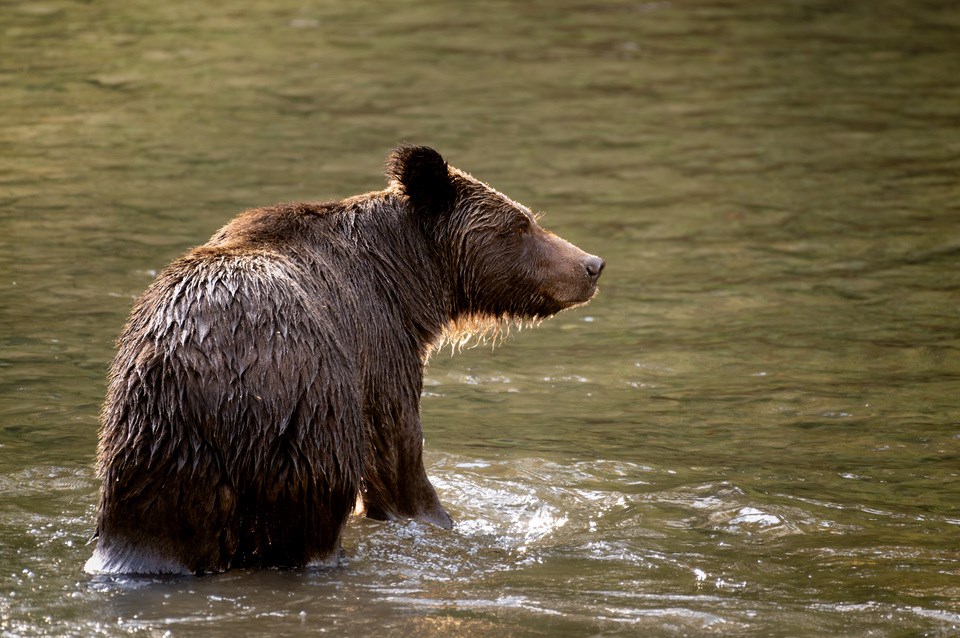
Some outfits outside her association, MacRae said, are not so careful. She pointed the B.C. operator Blue River Safari who was fined $35,000 in 2019 for baiting bears with cranberries, peanut butter and meatballs so clients could get a better view.
Darimont also warned there are some places in the world where eco-tourism has been linked to conflict. In parts of Africa, for example, scientists have documented elephants previously subject to eco-tourism that later raid crops in nearby communities.
“This is not to say that all eco-tourism, all individuals involved in ecotourism, will not be involved in conflict anywhere, anytime, anyplace on the on the planet,” said Darimont.
Unsecured attractants remain root cause for human-bear conflict
Back in the Bella Coola Valley, it’s not clear why bears that spent time with eco-tourism operators so rarely ended up in conflict with humans.
Part of the reason, Darimont speculated, could be because the bears who frequent viewing hot spots are far from communities. It could also be because those bears are well-fed, and a bear who has a belly full of salmon rarely takes chances with humans.
By contrast, Darimont speculates both younger and older bears that are not as well fed tend to take more risks, especially when humans leave garbage or other attractants out in the open.
Darimont said most experts now agree that unsecured attractants are the strongest driver of human-wildlife conflict. If her research holds up, eliminating eco-tourism as driver of conflict in the Bella Coola Valley is important because it can help re-focus attention on effective solutions, like securing food or installing electric fences around salmon cleaning stations and fruit trees, Field said.
“Humans are the most dangerous thing on the landscape for grizzly bears,” added Dairmont. “Grizzly bears know that.”
“And like any animal… wildlife, people included, tend not to take chances when they have resources.”
With files from the Canadian Press

